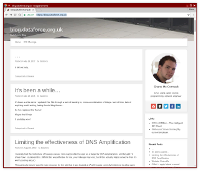Fun with TOTP Codes
This all started with a comment I overheard at work from a colleague talking about a 2FA implementation on a service they were using.
“It works fine on everything except Google Authenticator on iPhone.”
… What? This comment alone immediately piqued my interest, I stopped what I was doing, turned round, and asked him to explain.
He explained that a service he was using provided 2FA support using TOTP codes. As is normal, they provided a QR Code, you scanned it with your TOTP application (Google Authenticator or Authy or so), then you typed in the verification code - and it worked for both Google Authenticator and Authy on his Android phone, but only with Authy and not Google Authenticator on another colleagues iPhone.
This totally nerd sniped me, and I just had to take a look.







